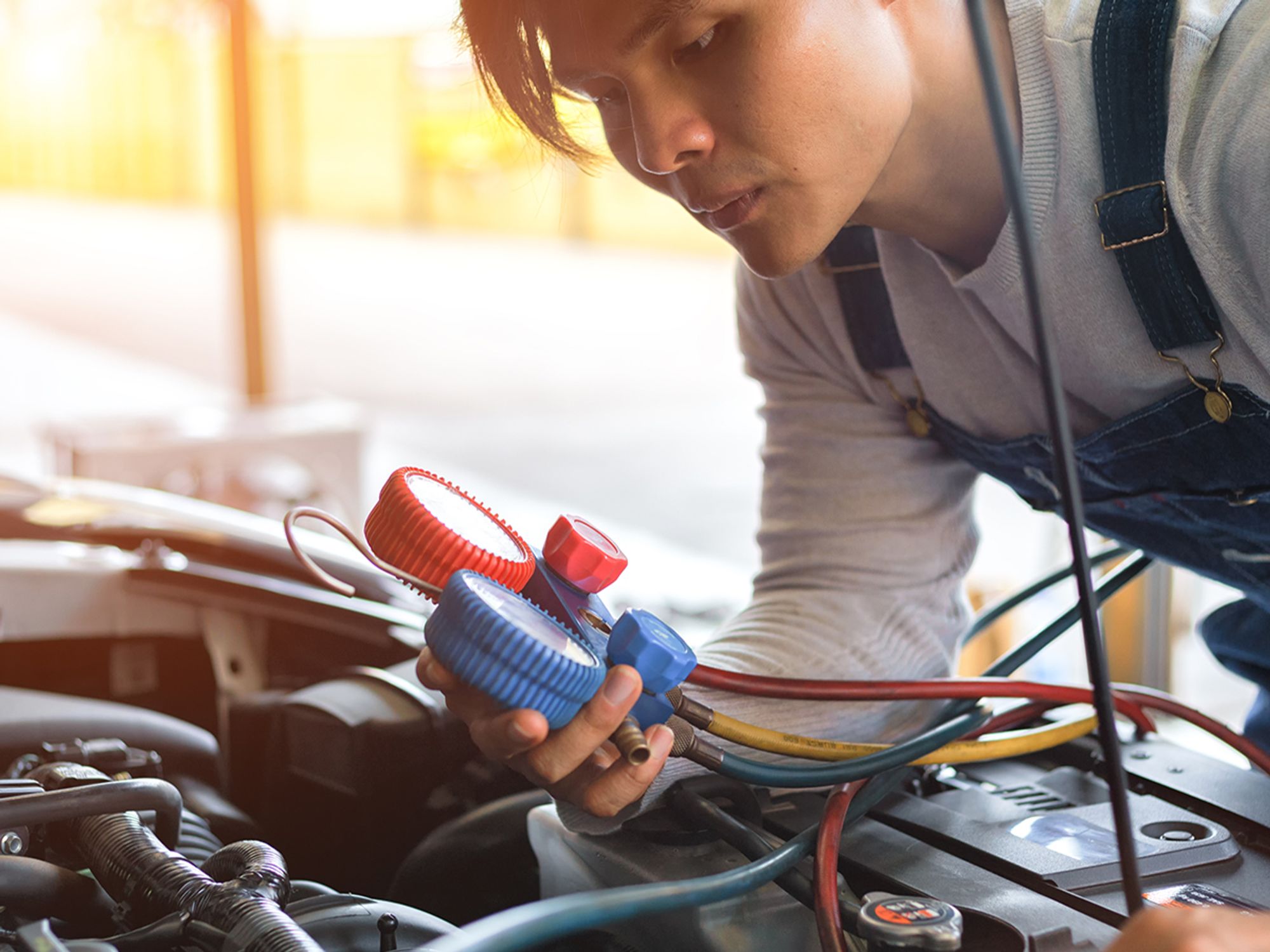Motor vehicle air-conditioner servicing (Section 609)

- The MVAC regulations are designed to prevent the release of refrigerants during servicing.
- Technicians who repair or service MVAC systems must be trained and certified under an EPA-approved technician training and certification program.
- New service shops or shops servicing MVAC systems for the first time must certify to their EPA Regional Office that they have acquired and are properly using approved refrigerant handling equipment.
Under 609 of the Clean Air Act (CAA), the Environmental Protection Agency (EPA) regulates the servicing of motor vehicle air conditioners (MVACs) and MVAC-like equipment used in farm and heavy-duty equipment. The EPA’s regulations are designed to prevent the release of refrigerants during servicing. Basic compliant points include:
- Refrigerant: Must be approved by the EPA and cannot be intentionally released (vented) to the environment.
- Servicing: When payment of any kind is involved (including non-monetary), any person working on an MVAC system must be certified under 609 of the CAA and they must use approved refrigerant handling equipment.
- Reusing Refrigerant: Refrigerant must be properly recycled or reclaimed before it can be reused, even if it is being returned to the vehicle from which it was removed.
The EPA evaluates alternative refrigerants under its Significant New Alternatives Policy (SNAP) program, established under 612 of the CAA. SNAP lists refrigerants for MVAC systems as either “acceptable subject to use conditions” or “unacceptable.” Each SNAP-approved refrigerant is required to be used with a unique set of fittings to prevent the accidental mixing of different refrigerants.
When an MVAC system enters the waste stream, the final person in the disposal chain must remove the refrigerant, or make certain that their customer has removed it, prior to disposal.
Technician training and certification
Technicians who repair or service MVAC systems for consideration (e.g., either payment or bartering), regardless of what refrigerant is used in the system, must be trained and certified under section 609 by an EPA-approved technician training and certification program. Technicians must use refrigerant handling equipment that has been certified by the EPA or an independent standards testing organization approved by the EPA to certify equipment.
Certified servicing equipment must be used to remove refrigerant prior to servicing or repairing an MVAC system or conducting any other service on a vehicle during which discharge of refrigerant can reasonably be expected. Recovered refrigerant must be either recycled or reclaimed before it can be recharged into an MVAC system, even if the refrigerant is being returned to the system from which it was removed.
Recovered refrigerant can either be recycled on-site using approved equipment designed to both recover and recycle refrigerant or sent off-site to a reclamation facility to be purified according to Air-Conditioning & Refrigeration Institute (ARI) Standard 700. Recycling removes impurities and oil, while reclamation returns the refrigerant to virgin specifications. Refrigerant sent off-site must be sent to an EPA-certified refrigerant reclaimer.
Recordkeeping requirements
New service shops or shops servicing MVAC systems for the first time must certify to their EPA Regional Office that they have acquired and are properly using approved refrigerant handling equipment. This is a one-time requirement. If a shop has certified ownership of a piece of chlorofluorocarbons (CFC)-12 or HFC-134a equipment at any time in the past, the shop is not required to re-submit certification to the EPA when they purchase new equipment. This applies even if the shop purchases equipment for a different refrigerant.
To certify equipment, provide a written statement signed by the person who acquired the equipment (this person may be the owner of the establishment or another responsible officer). Send the signed certification statement to the EPA Regional Office responsible for the state in which the establishment is located.
Service shops must maintain on-site records proving that each person using servicing equipment has been properly trained and certified under 609, as well as records of the name and address of any facility to which they send recovered refrigerant. These records must be maintained for three years.
